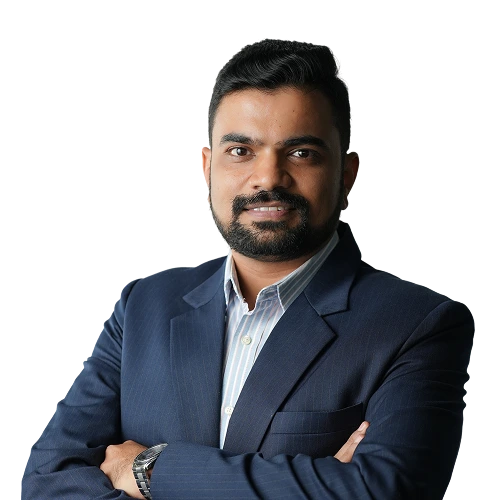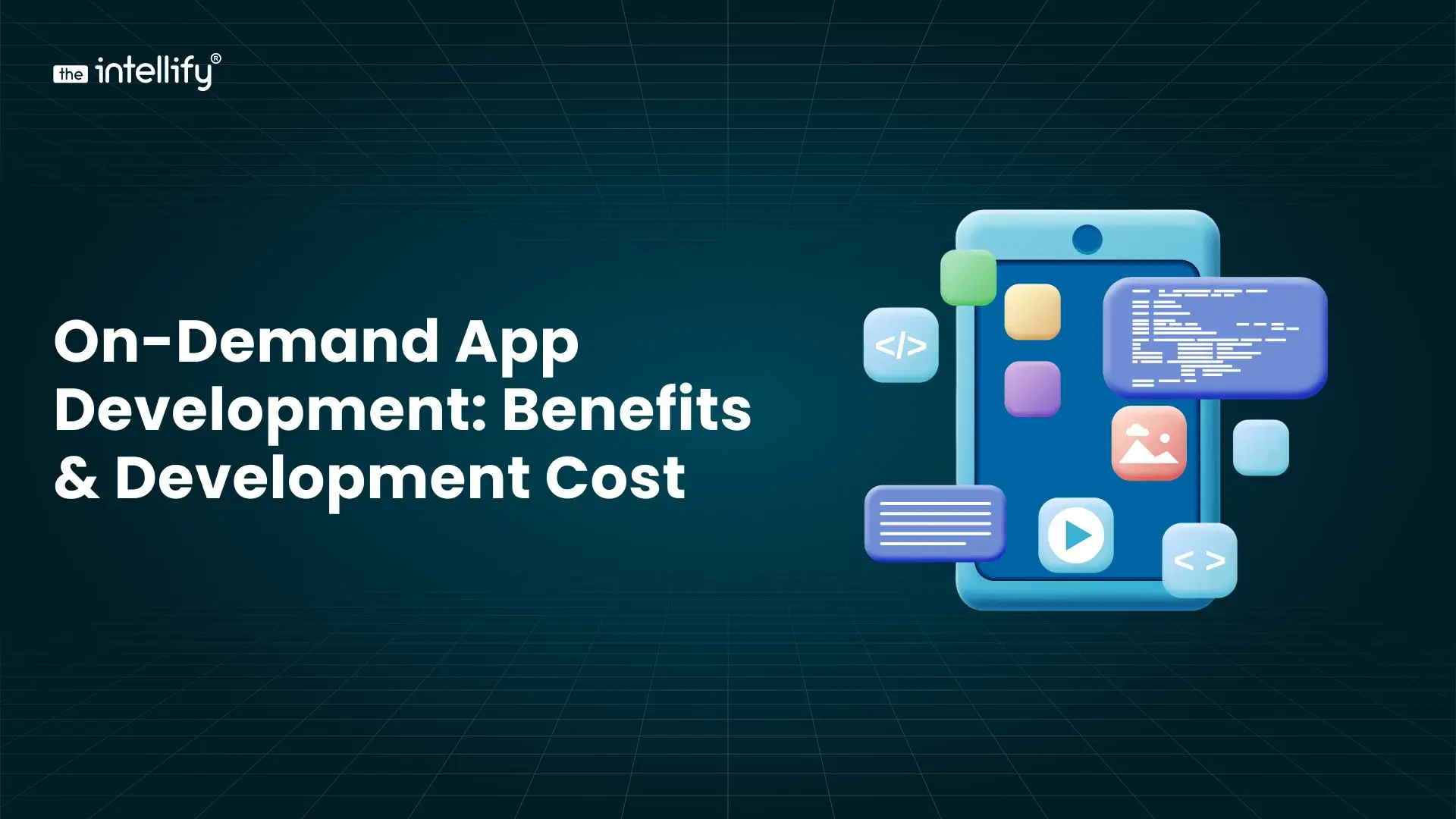
In today’s rapidly moving technological landscape, no company can afford to control their warehouses using outdated techniques. Whether you operate a small eCommerce shop or manage a big logistics corporation, having a Warehouse Management System (WMS) can make business operations run seamlessly or turn them into daily disorder.
In this blog, we’ll break down Warehouse Management System, its relevance in 2025, the key elements of a strong WMS, how to develop your WMS, and how to choose the right partner for warehouse management system development.
What Is a Warehouse Management System (WMS)?
A Warehouse Management System (WMS) is a software that assists in managing & controlling the routine activities inside a warehouse. It maintains an up-to-date record of stock, places orders, regulates shipments, and helps you organize your warehouse space better.
Consider it as a digital brain overseeing the smooth functioning of your warehouse to ensure operations are free from holdups, errors, and wasteful spending.
Why You Need a Warehouse Management System in 2025
In today’s world, where almost every service is provided “at the click of a button” with Amazon Prime offering instant delivery and same-day shipping, a well-integrated WMS can successfully fulfill customers’ expectations.
Benefits at a Glance:

1. Faster order processing
The use of WMS enhances efficiency as the system directs users to the locations of the items which improves workflows. This improves the order shipping ratio significantly.
2. Real-time inventory tracking
Visiting each storage place wastes time, causes inaccuracies, and oversights. A WMS eliminates these issues by tracking inventory in real-time.
3. Lower Operational Costs
Workflow speed increases and accuracy improves, resulting in the reduction of labor and storage expenses.
4. Improved Customer Satisfaction
With fewer errors, orders can be shipped out faster, pleasing the customer. When customers are pleased, they become repeat buyers.
5. Data-Driven Decisions
A WMS gives you access to reports and analytics that help you plan better, set budgets, avoid shortages, and predict future demand.
Key Features To Look for in a Warehouse Management System
Not all WMS platforms are created equal. Every device and secondary devices paired with the WMS must be monitored with RFID, bar code scanning and real time GPS tracking for optimum accuracy.

1. Real-Time Inventory Management
Managing stock count in real time alongside shipment tracking enhances accuracy and reduces the risk of errors.
2. Order Management
Your WMS must track and manage all orders, starting with picking, packing, and ending with shipment. Manual work and human error should be greatly reduced.
3. Integration with Inventory Management Software
Your WMS must integrate with your current inventory management program, ERP, e-Commerce site, and CRM system for the smooth data flow.
4. Warehouse Automation
Enhance efficiency and precision by automating routine tasks such as barcode scanning, labeling, and real-time stock level updates.
5. Custom Reporting and Analytics
Access reports on performance metrics like order accuracy, inventory turnover, and other key performance indicators on visual dashboards.
6. Access & Support via Cloud and Mobile Devices
Control operations for the warehouse using mobile devices and tablets from any location and at any time.
Who Needs a WMS Software?
A business that handles inventory management, order fulfillment, or shipping processes for products likely requires a WMS. Below are some examples of industries that are typically helped by warehouse management software:
- eCommerce and Retail
- Manufacturing and Assembly
- Third-Party Logistics (3PL) and Logistics
- Wholesale and Distribution
- Pharmaceutical and Medical Supplies
- Automotive and Spare Parts
Small businesses can also take advantage through integrated inventory management software with a trusted WMS.
Custom Warehouse Management Systems Development
Every business operates differently, and workflows that are tailored to their specific needs and industry standards often yield better results than generic solutions.
This is where custom warehouse management system development comes in.
Why Build Your Own WMS?
- Tailored workflows to match your exact requirements
- Flexibility to integrate third-party applications and platforms
- Scalable for future expansion
- Greater control over system performance and security
- Distinct advantage with automation and optimization capabilities
If you are looking for custom WMS development, make sure you work with development experts who understand not just code but warehousing logic, industry trends, and seamless UX design.
WMS Development Services By The Intellify Include:
- Business analysis and workflow mapping
- Custom WMS design and development
- Integration with inventory management software, ERPs, and CRMs
- Mobile WMS app development
- Cloud-based solutions
- Warehouse automation enablement
- Ongoing maintenance and support
Lean Warehouse Management System: What It Means in 2025
The concept of lean warehouse management is gaining traction. It’s about removing waste, improving process flow, and increasing customer value.

With lean WMS development, businesses can make smarter decisions using real-time data and AI-driven automation.
How to Choose the Right WMS for Your Business
Choosing the right warehouse management system isn’t about picking the most expensive one, it’s about finding the right fit.
Here’s what to consider:
1. Understand your warehouse needs
Are you focusing on faster picking, better tracking, or full-scale automation?
2. Check integration capability
Make sure it works with your existing systems- ERP, CRM, and shipping providers.
3. Look for scalability
Your WMS should grow as your business grows.
4. Ask about automation features
Can it support robots, IoT devices, or barcode scanning?
5. Consider custom development
If your needs are unique, go custom with a company like The Intellify.
6. Ensure mobile and cloud support
Flexibility is key in 2025, manage your warehouse from anywhere.
Warehouse Automation: The Future of Logistics
Automation in the warehouse is restructuring operational processes for many companies, especially those in high-demand sectors like e-commerce, 3PL, and manufacturing.
One of the key advantages of advanced automation systems is the ability to seamlessly integrate with a sophisticated WMS to facilitate:
- The processes of picking and packing can be automated using robots or conveyors.
- Efficient error-free identification through barcode and RFID scanning.
- Management of smart shelves that assist in storing and fetching items.
- Preemptive notifications for replenishing stocks and recognizing potential bottlenecks.
Integrating these systems with a robust inventory management solution transforms warehouse automation into an efficiency-enhancing powerhouse.
Final Thoughts
In 2025, A Warehouse Management System is no longer just a “nice to have” tool. Instead, it will be perceived as an essential element of conducting business. From real-time inventory tracking to warehouse automation, a solid WMS can help you reduce errors, lower costs, and scale faster. Whether you’re running a 5-person fulfillment center or a national distribution hub, the right WMS can turn your warehouse into a well-oiled machine.
For businesses experiencing issues such as mismatches in stock, slow order fulfillment, misplaced items, and other similar problems, the reasons for these issues stem from not having WMS. Whether you need a ready-made system or want to develop your own WMS, the benefits will show up quickly in your operations, your bottom line, and your customer reviews.

Written By, Jalaj Shah
The COO and Co-Founder of The Intellify. Jalaj enjoys experimenting with new strategies. His posts are fantastic for businesses seeking innovative development ideas. Discover practical insights from his engaging content.


How AI Inventory Management Software Transforms Business Operations
Summary: AI inventory management software is reshaping how businesses handle stock, forecasting, and daily operations. Instead of relying on guesswork or outdated spreadsheets, AI helps companies track inventory in real time, spot trends early, and prevent stockouts or excess stock. This blog explains how AI improves accuracy, lowers costs, and boosts overall efficiency across retail, […]


On-Demand App Development: Types, Benefits & Development Cost
Summary On-demand app development is transforming how businesses deliver fast and convenient services. This blog covers what on-demand apps are, their rising popularity, types, key benefits, popular examples, features, development process, and costs. Learn how an on-demand app can boost growth and enhance customer satisfaction. In today’s fast-paced world, convenience is everything. People want services […]


How to Choose the Best AI Agent Development Company
Summary This blog explains how businesses can choose the best AI agent development company to build intelligent and reliable AI solutions. This blog explores what AI agents are, how they work, and their real-world applications across industries like finance, healthcare, and manufacturing. It also outlines key factors to consider before hiring a partner, such as […]


Fuel Delivery App Development: A Complete USA Guide
Summary: This blog covers everything you need to know about fuel delivery app development, including how on-demand fuel delivery works, key features, costs, and legal considerations in the USA. It explains how businesses can build, launch, and scale a fuel delivery app while ensuring safety, compliance, and smooth operations. Whether you’re planning a new fuel […]


How AI Agents in Finance Are Transforming the Middle East
Summary: This Blog will explain what AI agents in finance are, their utility in the Middle Eastern market, their applications in the real world, the benefits they can bring to businesses, and how financial institutions can effectively utilize these tools. The Middle East’s finance industry is changing quickly, mostly because of new technologies and […]


How to Build an Instant Delivery App Like Blinkit & Zepto: Step-by-Step Guide
Summary: This blog explains how instant delivery apps like Blinkit and Zepto work, why the quick-commerce model is growing, and how you can build your own platform step by step. It covers features, technology, business models, costs, timelines, and common challenges. You’ll also learn what’s required for real-time delivery, dark-store operations, and logistics planning. If […]
0
+0
+0
+0
+Committed Delivery Leads To Client Satisfaction
Client Testimonials that keep our expert's spirits highly motivated to deliver extraordinary solutions.




















